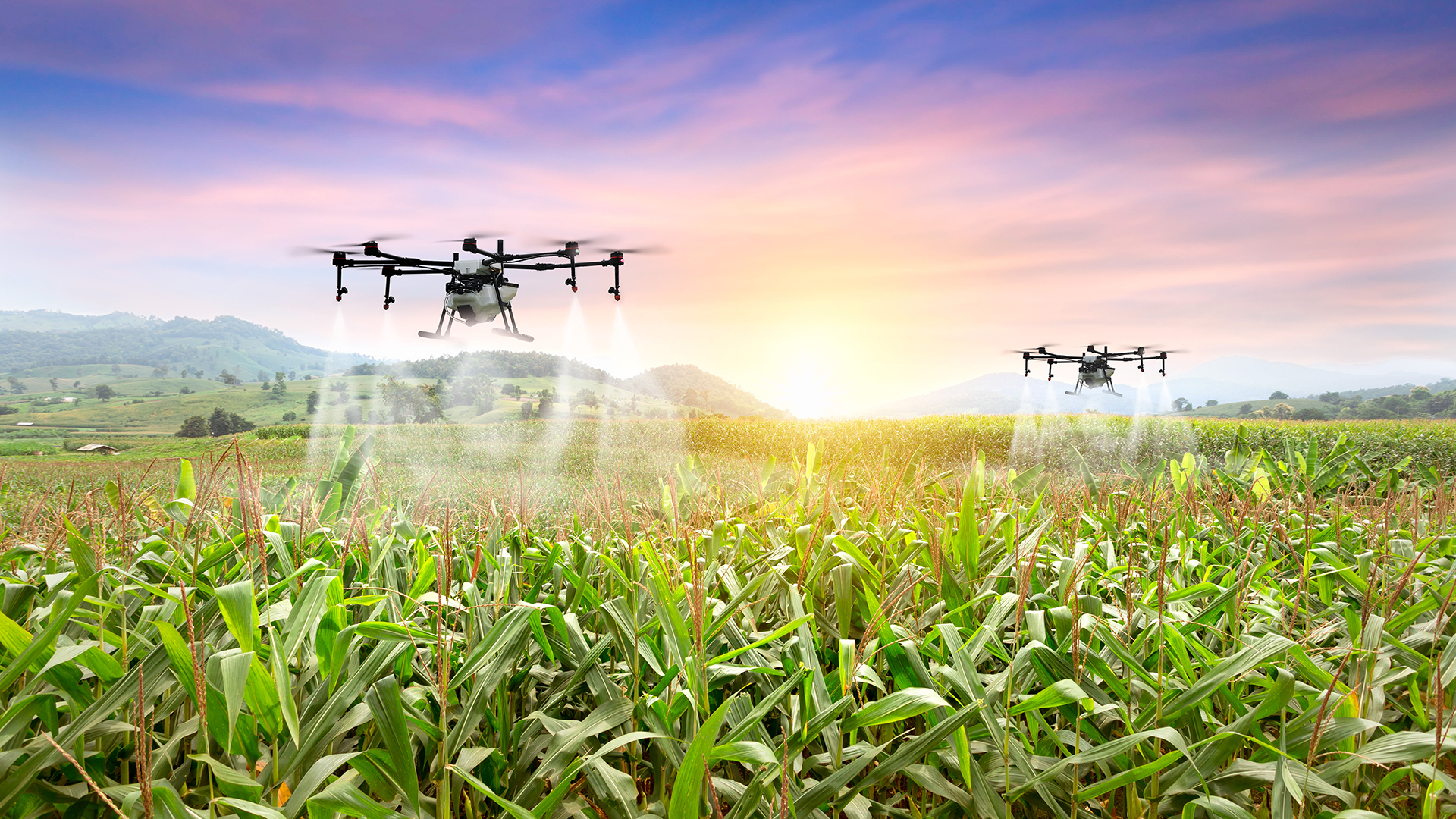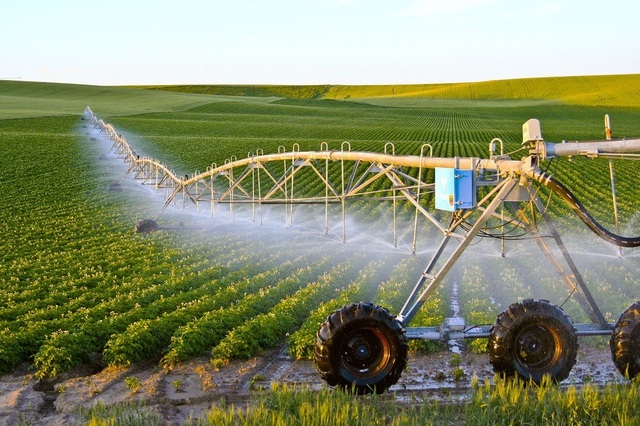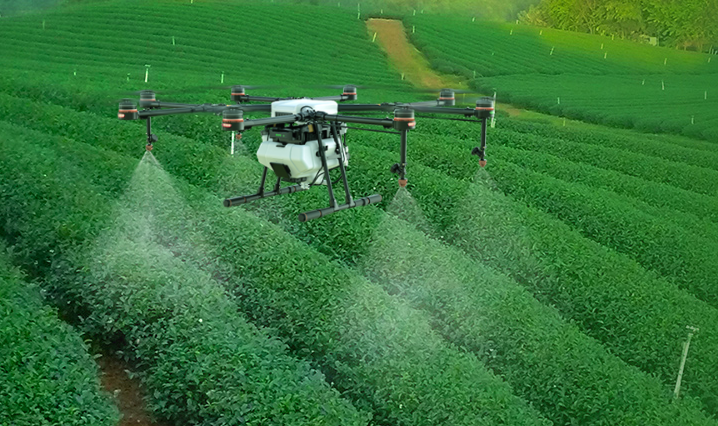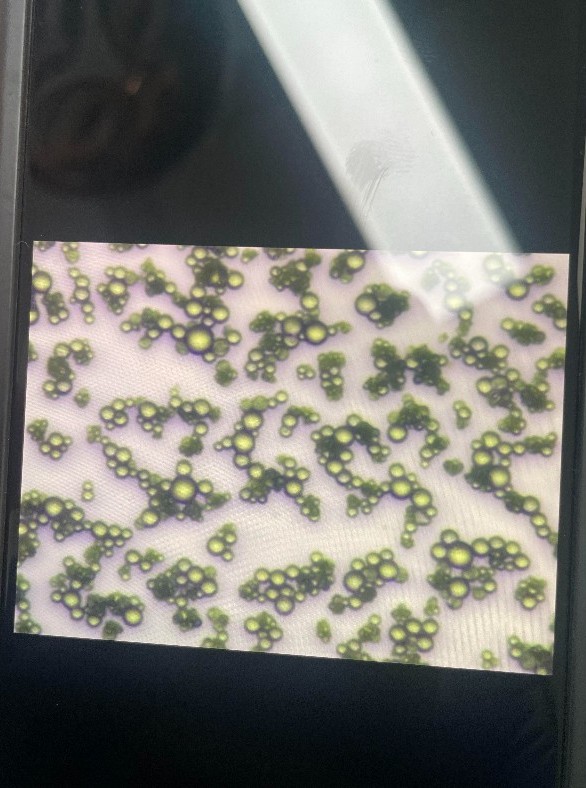
USING SEEDING MACHINERY
Using Automatic Sowing, Spraying, and Irrigation Machines to Save Labor: Solutions to Improve Agricultural Efficiency
In the context of modern agriculture, the pressure on productivity, quality and food safety is increasing, requiring farmers not only to meet market demand but also to optimize costs and minimize risks. The scarcity of labor, especially during peak seasons, along with the requirements for agricultural product quality and environmental sustainability, is pushing farmers to seek new technological solutions. In particular, the use of automatic machines such as seeders, sprayers and automatic irrigation machines has emerged as an effective solution, helping to save labor, increase productivity, reduce long-term costs and move towards a smart, sustainable agriculture.
________________________________________

1. The trend of agricultural mechanization and the labor problem
Traditional agriculture relies on manual labor. However, in recent years, the shortage of rural labor has increased as many young people move to the industrial and service sectors. This poses a difficult problem for farmers: How to maintain or increase production while human resources are decreasing? Promoting mechanization, automation and the application of modern machinery are becoming the inevitable solution.
Agricultural mechanization is not only a global trend, but also an urgent requirement in Vietnam and developing countries. Policies to support the purchase of machinery, training in technical use, along with the emergence of many enterprises providing smart agricultural equipment, create favorable conditions for people to access technology. In that context, automatic seeding machines, sprayers, and irrigation machines are key equipment, freeing up labor and improving farming efficiency.
________________________________________

2. Comprehensive benefits from applying automatic machines
2.1. Save labor and labor costs
First of all, automatic machines significantly reduce the amount of manual work. Instead of needing 5-7 workers for one hectare of field during the sowing or spraying stage, now only 1-2 people are needed to operate the machine. This not only reduces the cost of hiring workers but also reduces the pressure on time, especially during peak seasons when labor is scarce and rental prices are high.
Reduced labor costs will directly improve profit margins. Although the initial investment in machinery may be high, in the long run, durable and stable machinery will save a lot of costs, bring production costs to a reasonable level, and increase the competitiveness of agricultural products in the market.
2.2. Increase productivity and quality of agricultural products
When using a seeding machine, the distance between seeds, sowing depth, and sowing density are precisely controlled, helping crops germinate evenly and grow stably. This improves the productivity and quality of agricultural products, meeting the increasingly stringent requirements of consumers on food safety and hygiene.
For sprayers, because the distribution of pesticides is more precise and even, the amount of pesticides used is significantly reduced, saving costs, avoiding chemical abuse, protecting people's health and the environment. Plants are cared for scientifically, reducing pests and the risk of crop failure.
Automatic irrigation ensures the right water supply for plants, avoiding waterlogging or drought. Thanks to that, plants grow healthily, produce high yields, and significantly improve the quality of agricultural products.
2.3. Save time, improve management efficiency
Whereas previously manual sowing of a large area could take several days, now with a sowing machine, the job can be completed in a few hours. Similarly, a sprayer can treat several hectares in just half a day, while automatic irrigation can be scheduled and maintain stable moisture levels without the need for constant human intervention.
The time saved allows farmers to focus on other management tasks: pest monitoring, business planning, and finding stable output. This reasonable time allocation helps improve farm management efficiency, optimize resources, and move towards a smart farm model.
________________________________________

3. Learn about important machinery
3.1. Automatic seeder
The drill is designed to spread seeds evenly over the field surface at the desired density and depth. It can be adjusted to suit a variety of seeds (rice, corn, beans, etc.) and a variety of soil conditions. The result is uniform seedling emergence, reduced seed loss, increased germination rates, and less close or too sparse planting.
Currently, many types of mini seeders, multi-function seeders with fertilizer function, or seeders combined with precise GPS positioning have appeared on the market. This helps farmers adjust, monitor and optimize the planting process.
3.2. Automatic sprayer
Automatic sprayers are increasingly popular, from backpack-mounted models with power-assisted motors to self-propelled sprayers for large fields, or drones for spraying tall crops or complex terrain. Automatic sprayers help distribute pesticides evenly on crops, minimizing risks to workers and avoiding direct contact with toxic chemicals.
Thanks to precise spraying, pests are controlled more effectively, minimizing the risk of drug resistance, thereby maintaining a stable ecological environment. Some types of sprayers also integrate sensors and cameras to monitor the condition of crops, thereby providing optimal, economical and safe spraying solutions.
3.3. Automatic irrigation machine, smart irrigation system
Automatic irrigation systems, including drip irrigation, mist irrigation, and water-saving irrigation, have been widely applied. Irrigation machines integrated with soil moisture sensor technology, controlled via smartphone or timer, help farmers supply water at the right time, in the right amount, avoiding wasting water resources.
Scientific irrigation reduces the risk of pests and diseases due to irregular humidity, while reducing erosion and maintaining soil fertility. Automatic irrigation also has the advantage of not having to be present in the field, freeing up time for other tasks or simply resting and regenerating labor.
________________________________________

4. Notes when applying automatic machines
4.1. Choose the right device
When deciding to invest, farmers should consider actual needs: Area size, crop type, terrain characteristics, financial capacity. For example, a household with a small area may need a mini seeding machine, while a large farm may require modern, high-capacity machinery. Similarly, choosing a drip or sprinkler irrigation system depends on the nature of the crop and the water source.
4.2. Regular maintenance and servicing
Machinery, no matter how modern, requires regular maintenance to maintain performance. Checking components, changing grease, cleaning filters, updating software (if applicable), will prolong the life of the equipment, reducing the risk of mid-cycle breakdown. This is especially important during the growing season, when any failure can lead to significant losses.
4.3. Training and skill development
Operating automatic machines is not too difficult, but to maximize efficiency, farmers should attend training courses, consult experts or technicians. Understanding how to adjust the machine, how to detect problems, how to connect the machine to the mobile information system (if available) will help farmers master the technology and confidently apply it to production.
________________________________________

5. Combined with sustainable business and production strategy
Using automatic machines is not only a technical solution, but also needs to be linked to a sustainable business and production strategy. Farmers can combine crop rotation, intercropping, organic fertilizer application, and application of IPM (integrated pest management) to reduce dependence on chemicals and improve the quality of agricultural products.
In addition, taking advantage of online sales channels and e-commerce helps farmers access a wider market, increasing the value of products. When the quality of agricultural products is guaranteed thanks to modern technology, the reputation of the farm will spread far and wide, attracting new customers, creating a sustainable production - consumption cycle.
________________________________________

6. Conclude
The use of automatic seeders, sprayers, and irrigation machines in agricultural production is an important step forward, opening up the future for smart and sustainable agriculture. These devices help save labor, increase productivity, reduce costs, protect the health of workers and the environment. Thereby, farmers can affirm their position in the agricultural value chain, meeting the increasing demands of the market.
To be successful, farmers need to choose the right equipment, maintain it properly, continuously improve their operating skills and combine the use of machinery with a sustainable agricultural strategy. Only then will mechanization truly become a driving force for development, helping farmers not only save on labor but also improve their quality of life and economic efficiency in the long term.
Bình luận
Những bình luận mới nhất



